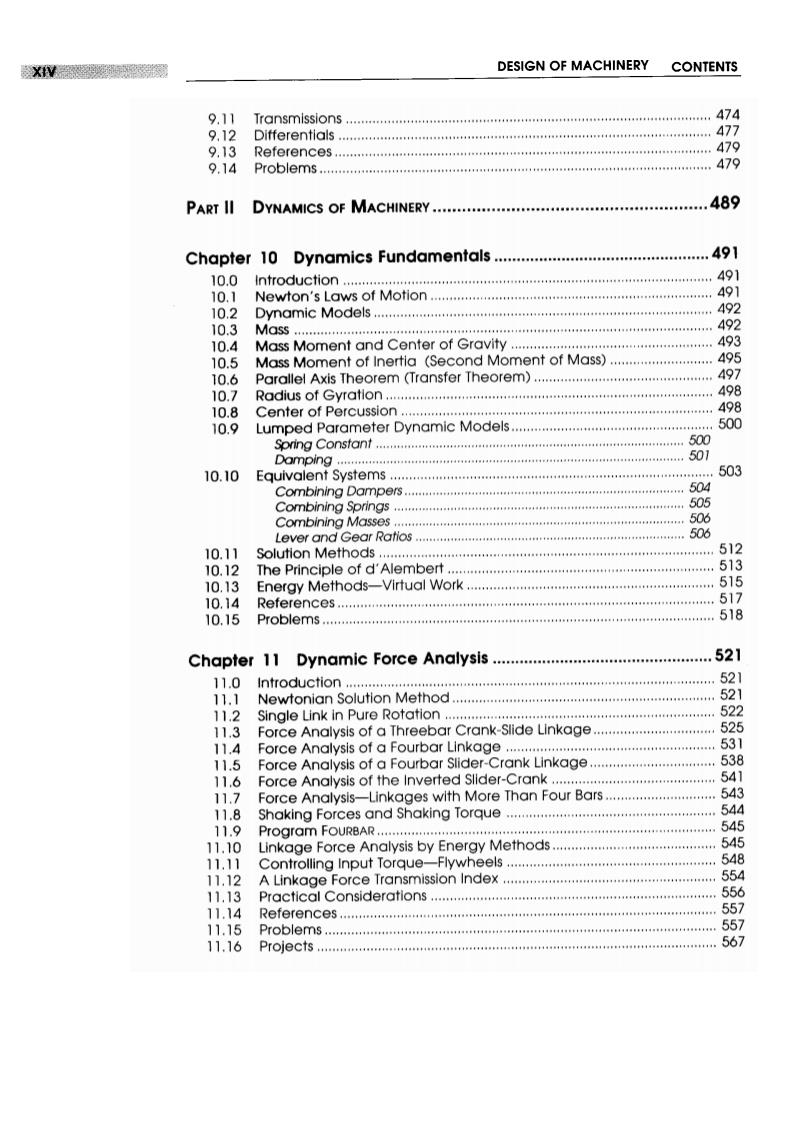正在加载图片...

DESIGN OF MACHINERY CONTENTS 9.1 1 Transmissic0n5… 474 9,12 ........... 477 9.13 479 9.14 Problems… 479 PART I DYNAMICS OF MACHINERY........... 489 Chapter 10 Dynamics Fundamentals491 10.0 intpoduction........ 491 10.1 Newton's Laws of Motion....... 491 10.2 Dynamic Model544… 492 10.3 492 10.4 Mass Moment and Center of Gravity........ 493 10.5 Mass Moment of Inertia (Second Moment of Mass)........................ 495 10.6 Parallel Axis Theorem (Transfer Theorem)................... 497 10.7 R0 dius of Gyratio门,4t4444,449t444 498 10.8 Center of Percussion............. 498 10.9 Lumped Parameter Dynamic Models......... 500 Spring Constant........... 500 501 10.10 Equivglent Systems.. 503 Combining Dampers 504 505 Combining Masses....... 506 Lever and Gear Ratios... 506 10.11 512 10.12 The Principle of d'Alembert... 513 10.13 Energy Methods-Virtual Work. 515 10.14 Refere门C0S,444444444t44444t+ 517 10.15 Problems4444… 518 Chapter 11 Dynamic Force Analysis................... 521 521 11.1 Newtonian Solution Method521 11.2 Single Link in Pure Rotation..... 522 11.3 Force Analysis of a Threebar Crank-Slide Linkage........................... 525 11.4 Force Analysis of a Fourbar Linkage........................ 531 11.5 Force Analysis of a Fourbar Slider-Crank Linkage....................... 538 11.6 Force Analysis of the Inverted slider-Crank......................... 541 11.7 Force Analysis-Linkages with More Than Four Bars............5.43 11.8 Shaking Forces and Shaking Torque............. 544 11.9 Program FOURBAR. 545 11.10 Linkage Force Analysis by Energy Methods........................... 545 11.11 Controlling Input Torque-Flywheels.................. 548 11.12 ALinkage Force Transmission Index.... 554 11.13 Practical considerations............................. 556 11.14 557 11.15 557 11.16 567